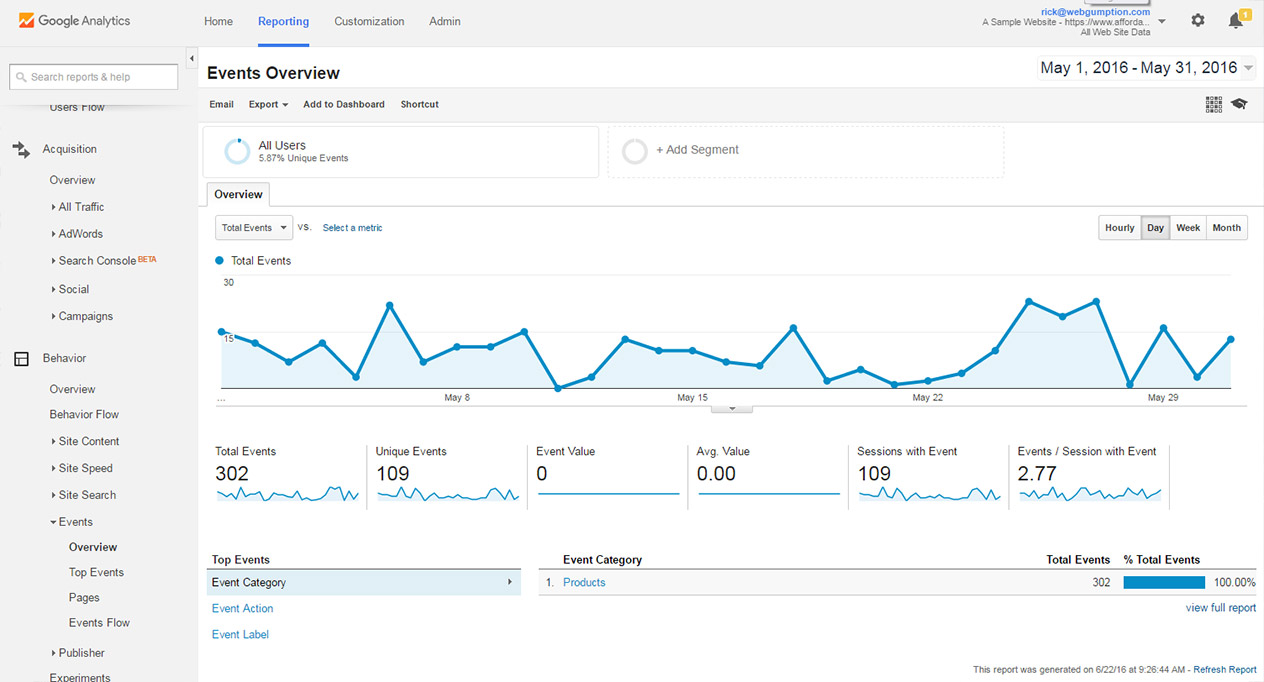Google Analytics Event Tracking Fundamentals Explained
Wiki Article
Not known Factual Statements About Google Analytics Event Tracking
Table of ContentsThe Only Guide to Google Analytics Event TrackingAn Unbiased View of Google Analytics Event TrackingAll About Google Analytics Event TrackingGoogle Analytics Event Tracking - An OverviewWhat Does Google Analytics Event Tracking Mean?What Does Google Analytics Event Tracking Mean?

If you're mosting likely to establish event monitoring manually, then you're going to need to add some additional code to the components you intend to gather data from. The code you're going to function with will certainly look something like this: There are 4 components within that code bit that you're mosting likely to need to define on your own: occasion, Classification, event, Activity, occasion, Tag and event, Value.
As you can see, two of these are required (group and action) while label and value are optional. Everything depends upon the sort of information you want communicated back to Google Analytics when a customer clicks the specified element (Google Analytics Event Tracking). It will be much simpler to define these components if you analyse your web site and decide which elements/actions you want to track
Everything about Google Analytics Event Tracking
Now, you'll be asked to define the and and you'll wish to pick from the drop-down menu that shows up when you click on. This will bring up the exact same event monitoring parts we looked at earlier, which you'll require to complete. As soon as you have actually defined these, you can move to the 2nd box and select the trigger that will discharge your tag.On the next display, you'll likewise have a field for naming your trigger and, if you click the box, you'll see a checklist of the different triggers you can select. In this situation, we intend to choose and after that pick the choice listed below. You'll set the trigger to just terminate when an element is clicked with a Link that contains the.
Every web site talks. Before data analytics, we could not hear the voices of our websites. Exactly how do you know what your site is claiming? Simple - Occasion monitoring! Event monitoring offers you a photo of how customers engage with your internet site and service (Google Analytics Event Tracking). Do you wish to know more? Then, read on as we check out everything you require to understand, including what it is, why you need to track occasions, exactly how to handle occasions data, and other relevant FAQs you may have.
The Facts About Google Analytics Event Tracking Uncovered
You can change between your occasion categories, actions, and labels in the Leading Occasions report. The Event Pages record shows the pages where events are triggered.Occasions in Google Analytics have four main elements. Google Analytics uses these codes to track customer interactions and group them right into event reports (Google Analytics Event Tracking).
A checklist of the specifications you can track on your web site is on the. After inspecting all essential fields, you can click "X" to close the home window and return to the Overview food selection on the.
An Unbiased View of Google Analytics Event Tracking
Selecting "False" will prevent that session from being a bounce. If you have not done so, you may require to establish up a variable in the Google Analytics Setups box. Click "New Variable ..." if you can not find one to choose. After this, enter your GA tracking ID in the Tracking ID field.
To do this, follow the following collection of actions: After setting up the areas, pick the "Triggering" area. When configuring your new trigger, click the "+" switch, then the "pencil" button, then choose your trigger type.
Google Analytics Event Tracking for Beginners
When it comes to recognizing which areas and aspects are guiding clients via your conversion funnel, you still will not recognize. Without event monitoring, GA records will only count check outs as single-page sessions, even if individuals invest a whole lot of time on one page and engage with it substantially (and a bounce).
Just how does occasion monitoring accomplish this?Single-page sessions understood as bounces begin and conclude on the very same web page. Without occasion tracking, GA will classify a customer's visit as a bounce if they do not browse to an additional web page, no matter of exactly how they connect with it. For instance, a video-rich Google Analytics Event Tracking page can have a greater bounce price if events are not tracked.
The Basic Principles Of Google Analytics Event Tracking
Nonetheless, for GA to take event hits right into account when determining bounce prices, you should choose Continue "Non-interaction occasion" as "False" during the GTM configuration. Setting "occasion goals" with occasion activity is a superb method to track individual tasks you value extremely, such as new lead entries or clicks on a telephone call to action.Report this wiki page